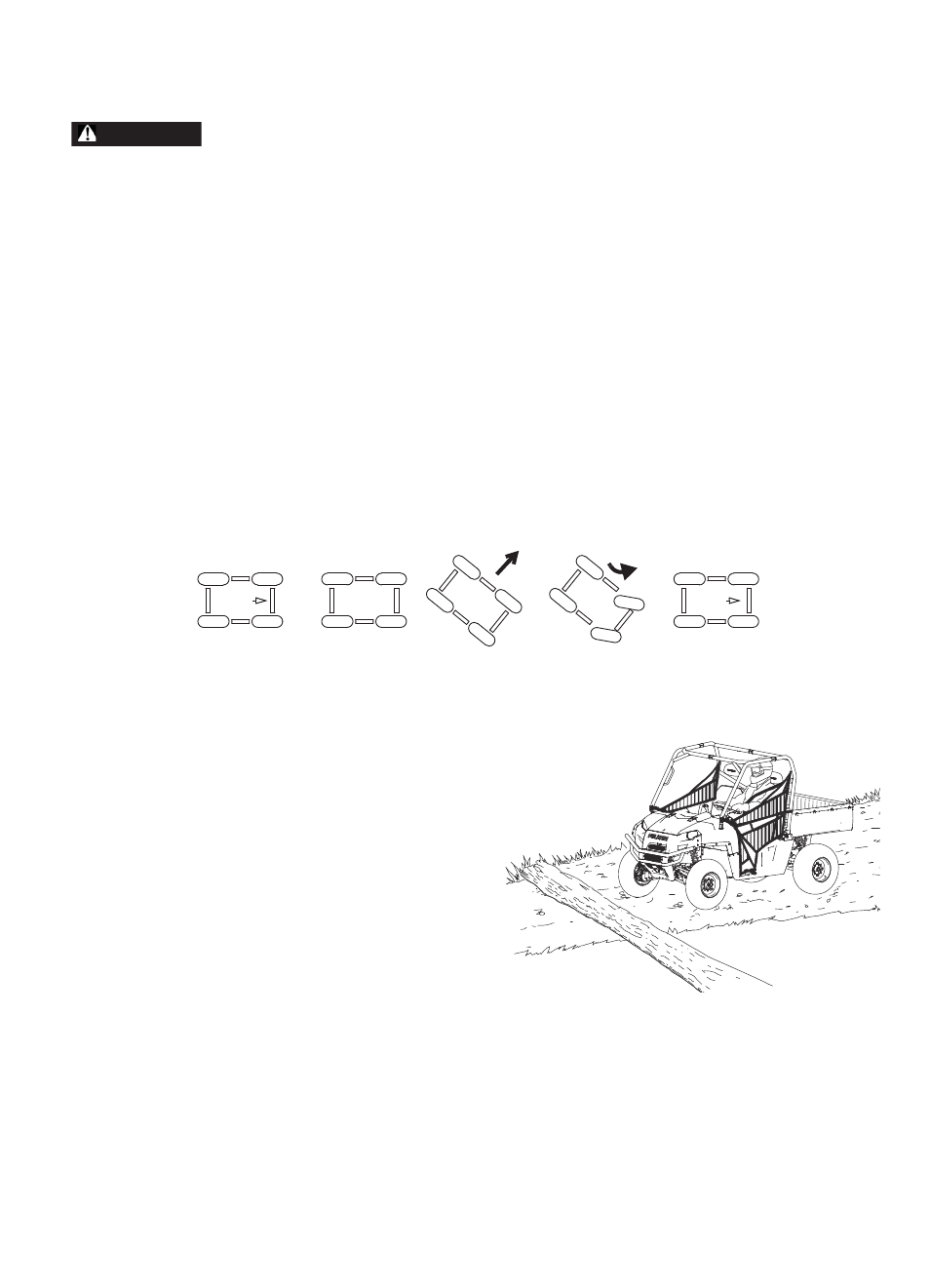Operation, Driving on slippery surfaces, Driving over obstacles – Polaris 2016 Ranger 570 Full-Size User Manual
Page 39

37
OPERATION
Driving On Slippery Surfaces
Skidding or sliding can cause loss of control or rollover (if tires regain traction unexpectedly). When
operating on slippery surfaces such as ice or loose gravel, reduce speed and use extra caution to
reduce the chance of skidding or sliding out of control. Do not operate on excessively slippery surfaces.
Whenever riding on slippery surfaces such as wet trails or loose gravel, or during freezing
weather, follow these precautions:
1. Do not operate on excessively rough, slippery or loose terrain.
2. Slow down before entering slippery areas.
3. Maintain a high level of alertness, reading the trail and avoiding quick, sharp turns,
which can cause skids.
4. Engage all-wheel drive before wheels begin to lose traction.
NOTICE: Severe damage to the drive train may occur if the AWD is engaged while the wheels are
spinning. Always allow the wheels to stop spinning before engaging AWD.
5. Correct a skid by turning the steering wheel in the direction of the skid. Never apply the
brakes during a skid.
Driving Over Obstacles
Follow these precautions when operating over
obstacles:
1. Always check for obstacles before operating
in a new area.
2. Look ahead and learn to read the terrain. Be
constantly alert for hazards such as logs,
rocks and low hanging branches.
3. Travel slowly and use extra caution when
operating on unfamiliar terrain. Not all
obstacles are immediately visible.
4. Avoid operating over large obstacles such as
large rocks and fallen trees. If unavoidable,
use extreme caution and operate slowly.
5. Always have all passengers dismount and move away from the vehicle before operating
over an obstacle that could cause a rollover.
WARNING
Sideways
skid
Turn in
direction of
skid
